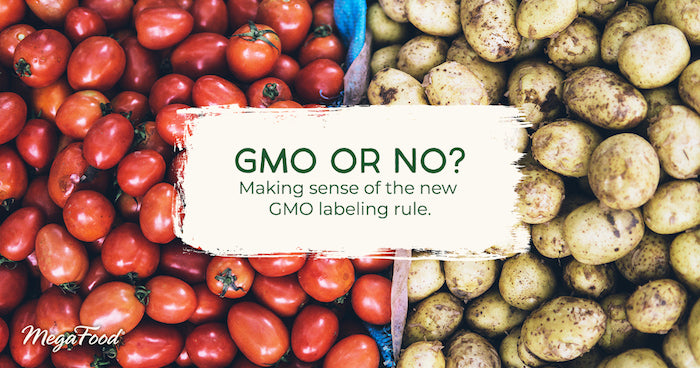GMO, or no? Making sense of the new GMO labeling rule.

| Bethany Davis, Director of Advocacy | January 2019 |
The final GMO labeling rule -otherwise known as the National Bioengineered Food Disclosure Act- was released last week. Unfortunately, it's a dud.
The fight for mandatory labeling of GMOs started years ago. After California and Oregon lost state initiatives, Vermont was successful in passing a totally decent state bill that was due to go into effect a couple years back.
Thank you, Vermont
If you were following the issue at the time, you would know that several other states were in the process of following VT’s lead. And you’d also know that in response to the idea of companies having a different set of rules for GMO disclosure in that one state, and knowing that we might end up with 50 different laws in 50 different states (because almost everyone wants to know what is in their food!)... even large food companies who put a LOT of money into fighting other state initiatives became open to negotiating a federal law.
A federal interception
A mandatory disclosure bill was passed by congress and signed into law just before the VT law was due to go into effect. This did a couple of things. For one, it pre-empted the VT law, which means that it nullified it essentially, preventing states from having their own laws on the subject. And second, it gave the USDA a set amount of time to create proposed, and then final, language for the program.
At this point, quite a few things were still TBD. What would the disclosure say? Would it say “GMOs” or “genetic engineering” or “bio-engineered”? Would there be any images? What types of products would be included? What would the labeling look like?
Well, we have answers now. And they aren’t pretty.
“Bioengineered” is the new black
Under this new, final law:
MANY foods will be exempt from having to display the new label. Most GMO crops are used for animals feed (not required to be disclosed under the new law), fuel (irrelevant to the new law) and highly processed foods (not required to be disclosed under the new law). Sooooo… will we actually see any GMO disclosures on food labels? Maybe, only because some food companies have pledged to label the anyway!
Don’t judge a label by its cover

Shiny, happy labels are what you will see on any foods that actually do need to disclose bioengineered ingredients. The symbol above is a far cry from the legitimate warning that we would have liked to see. It could actually make people think that GMOs are farm friendly or healthier than conventionally or organically grown crops.
Labels won’t use the term GMO, or genetic engineering, or anything else that a customer would actually recognize. Instead they will use “bioengineered”. This will only add to confusion.
It goes way beyond food
The bottom line is that GMO disclosure on food isn’t just about food safety or whether or not it's safe to eat GMOs. It's about seed sovereignty, saving pollinators, avoiding toxic chemicals, gut health, soil erosion, nutrient density of food, and food security. There are so many reason that people want to clearly know where their food is coming from and what practices are being utilized in order to produce that food. This final language is a far cry from the transparency that customers deserve.
MegaFood is asking food and supplement companies to go beyond what the new law requires and simply be transparent! As consumers, keep supporting brands that disclose their supply chains, and are not only transparent about what’s in their products, but also dedicated to what’s not.


Leave a comment
This site is protected by hCaptcha and the hCaptcha Privacy Policy and Terms of Service apply.